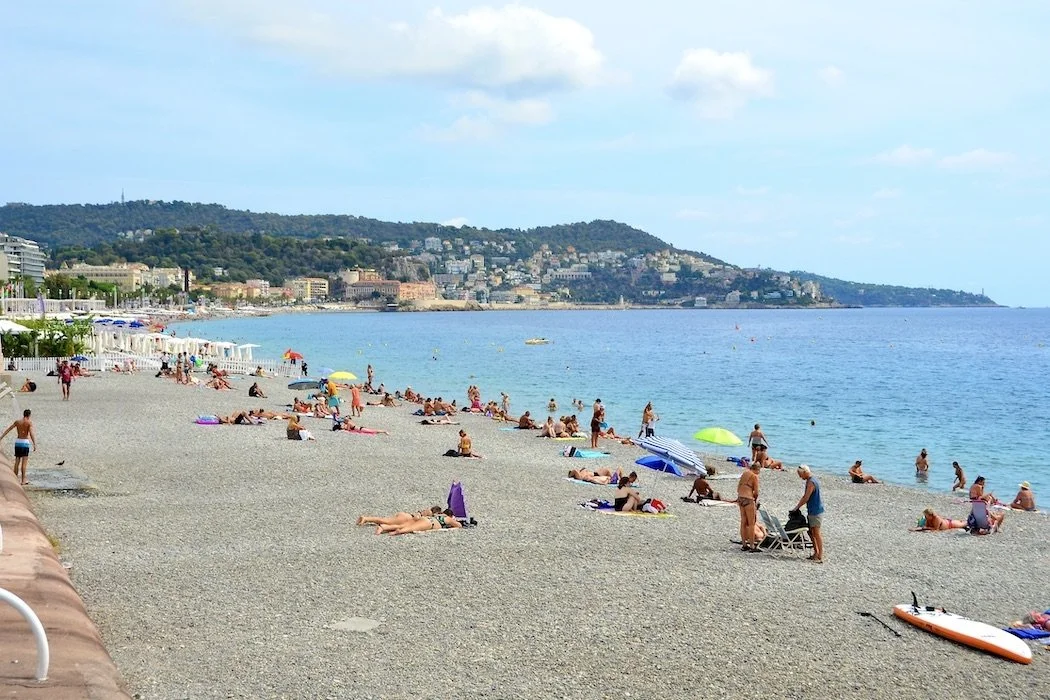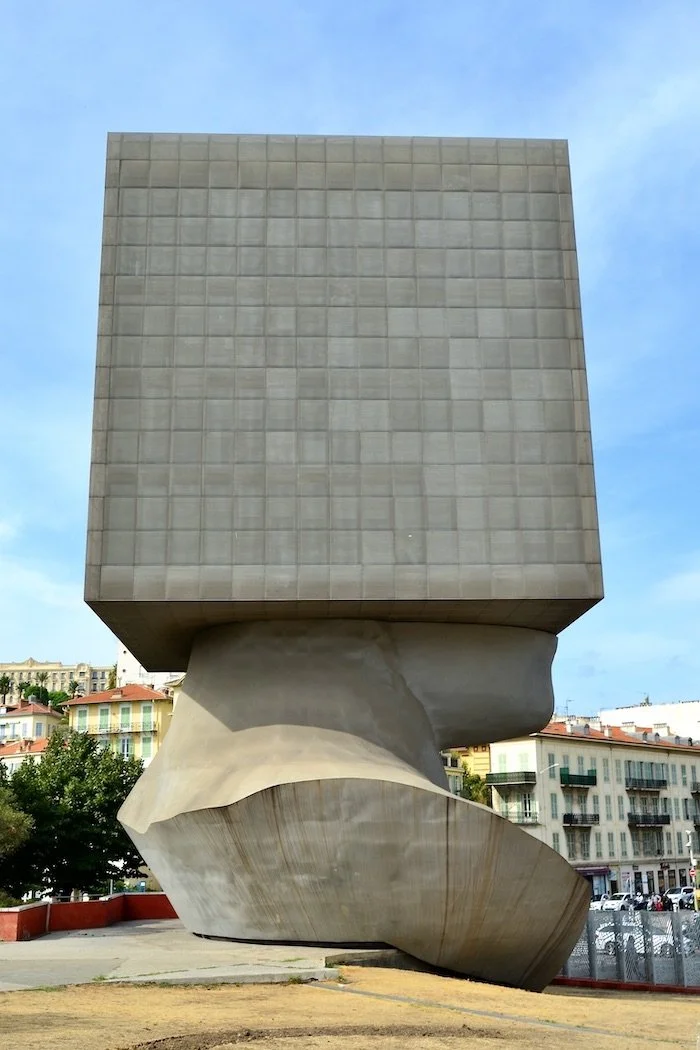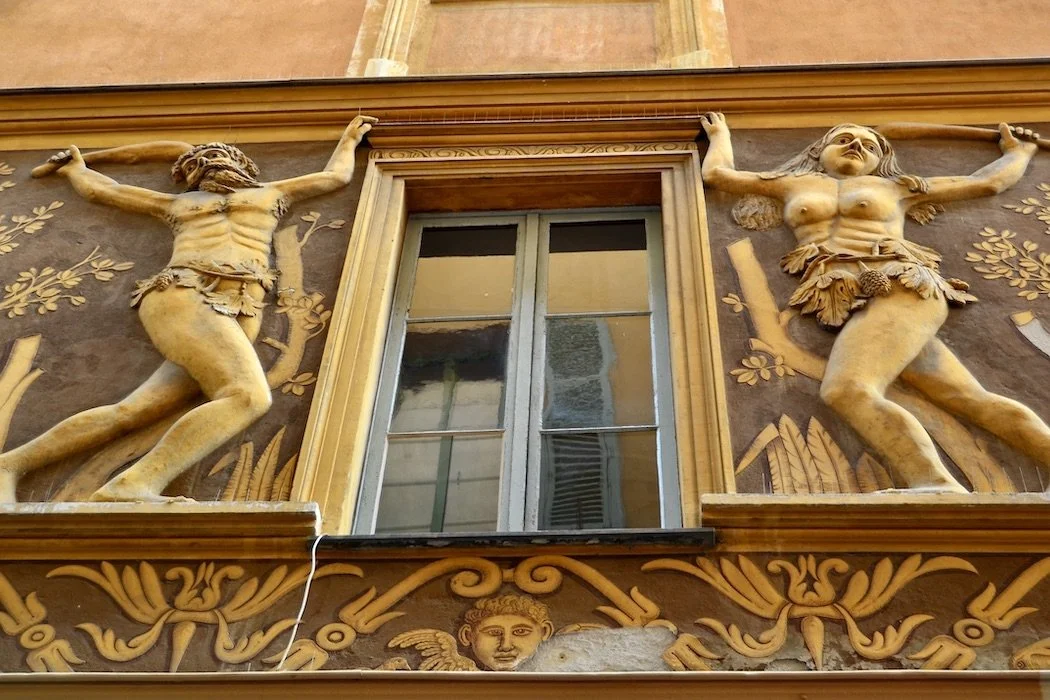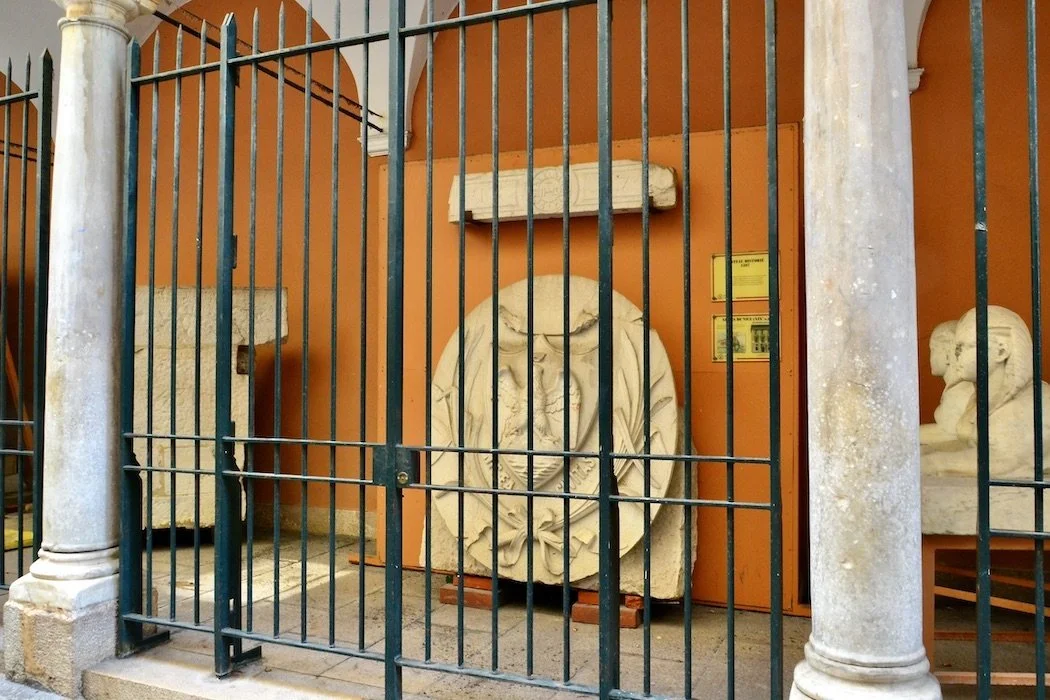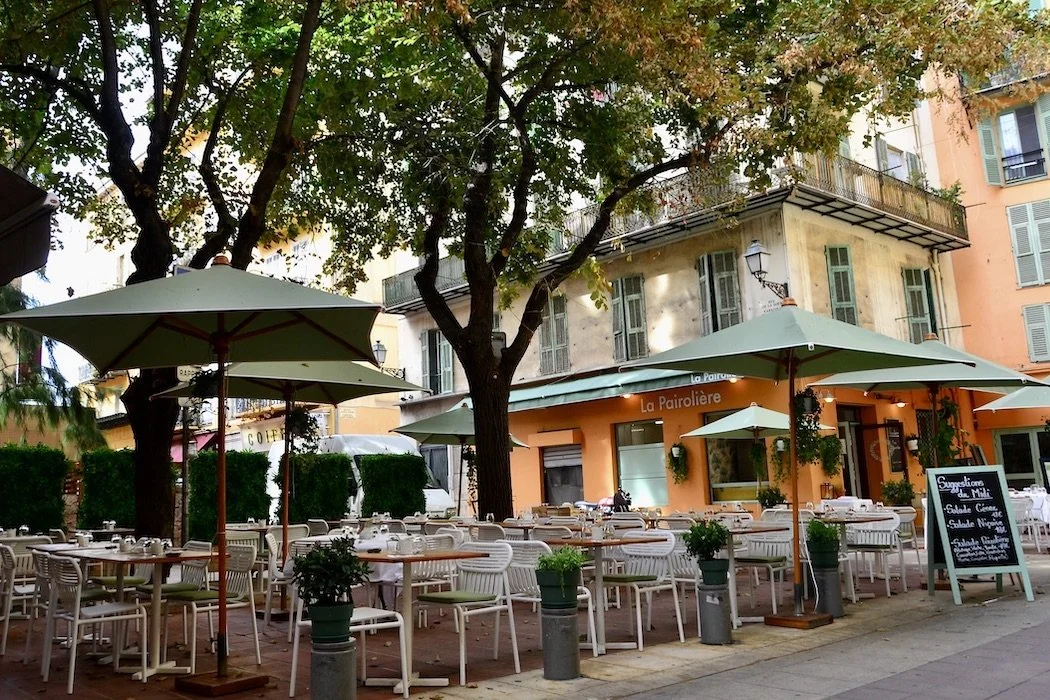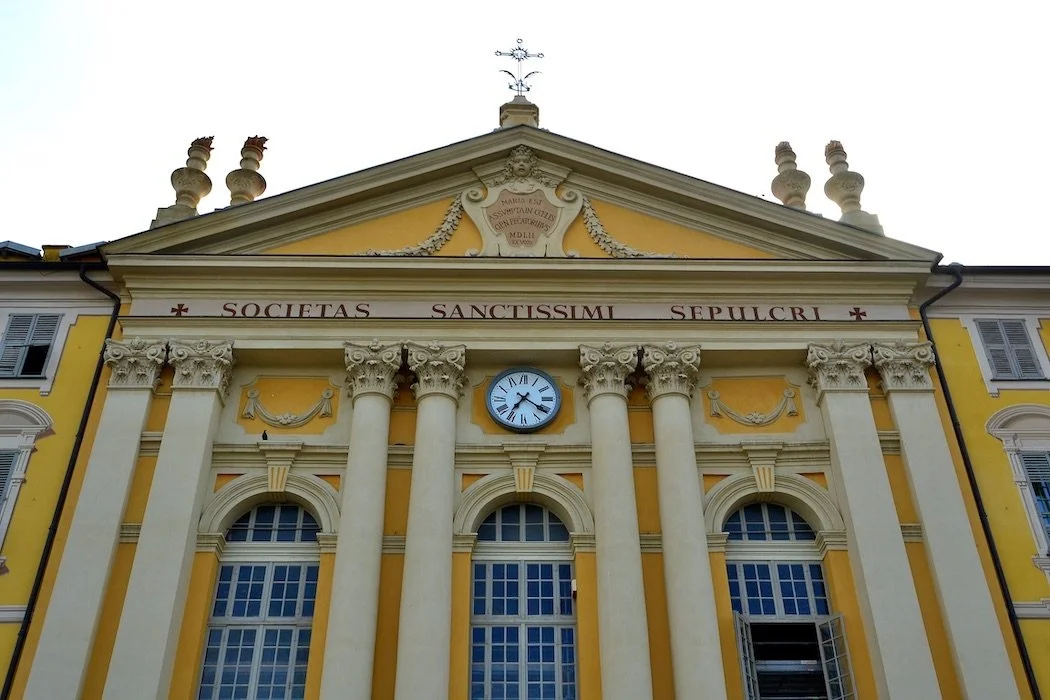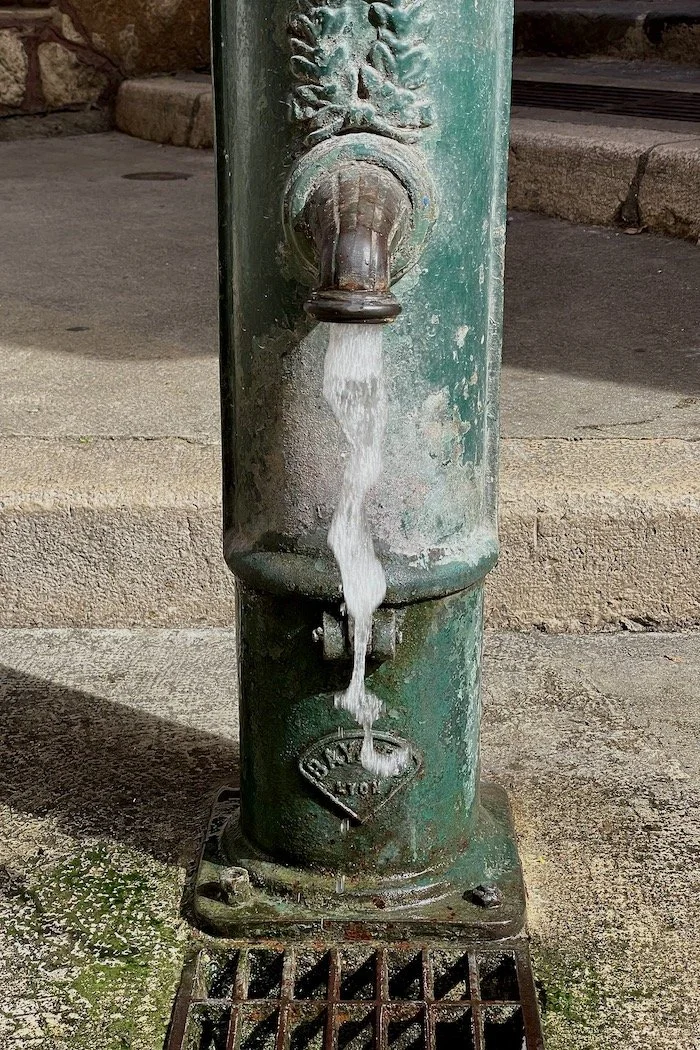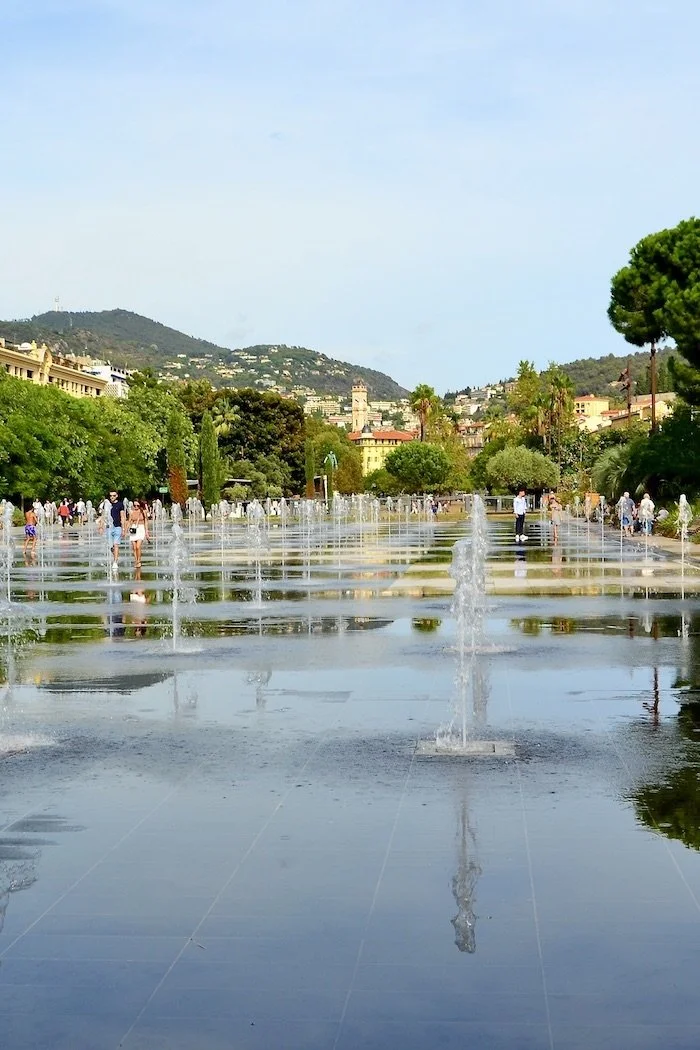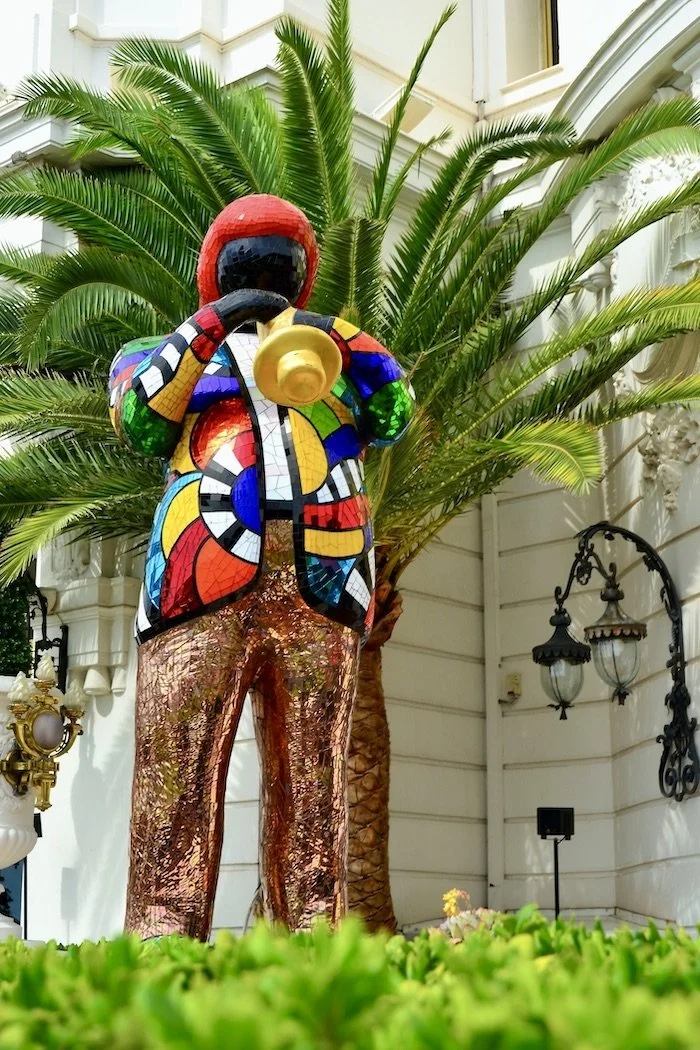Hidden Nice in Autumn
Autumn on the Baie des Anges in Nice
“Delicious autumn! My very soul is wedded to it…” — George Eliot
In autumn, the skies over the Cote d´Azur are clearer, the air crisper, and a touch of snow might appear on the Alpes Maritimes. When the high season has ended and the crowds are gone, it’s still plenty warm enough to sunbathe and swim. This is the time of year for outdoor dining, which can be unbearable in the heat of summer. Comfortable temperatures make Nice an ideal autumn destination, especially for a leisurely stroll through the streets, as wealthy English visitors already knew in the second half of the 18th century. Don’t forget to look up at wonderful architectural gems and wonder behind the facades to see what often remains hidden from view.
Nice was founded as a permanent settlement by Greeks who had previously established Massalia (Marseille) and then named this location Nikaia after Nike, the goddess of victory. The Romans naturally followed, establishing Cemenelum in the hills above the busy trading port, and their ruins remain in the present-day district of Cimiez. Through the ages, Nice changed hands numerous times because of its strategic location, also becoming part of various Italian alliances, until it was ultimately re-annexed by France in 1860.
Often missed in the heart of the old town in a narrow street, the 1584 Adam & Eve House is so-called because of a second-story bas-relief depicting the pair in the Garden of Eden. Nearby, duck into the small, rather dark Baroque Church of Santa Rita. Dating to the 1600s, the six side chapels, lovely, frescoed ceilings, and ornate carvings brought calm into the bustle of a medieval town. Just around the corner from the church, the Loge Communale protects ancient socca, or stone fragments, monuments, and epitaphs dating to the Roman Era, behind a metal fence. This was once part of a medieval city lodge, comparable to a Roman Forum or regular marketplace and public debate space.
At the edge of Old Nice, the Place Garibaldi serves as a crossroads between the old and the modern city. On the square, the neoclassical Chapelle du Sainte-Sépulre-des-Péntitents-Bleus features cannonballs over the lower doorways that were fired by the Turkish fleet during the siege of Nice in 1543. Beyond Nice’s main square, the Place Masséna, La Tete Carrée sits high in a garden behind the Museum of Modern Art. Designed by French artist Sacha Sosno, the striking cube-shaped structure balancing on a neck and chin is Nice’s three-story central library.
On the terrace of the chateau that overlooks Old Nice, the firing of Midday Cannon startles visitors while residents take it in stride. In a tradition dating back to the 1800s, a puff of smoke appears in the city’s blue skies, and a pop can be heard. Nowadays, it isn’t actual cannon fire but a manually set firework. Back along the coast, the often-overlooked Légion d’Honneur Garden offers another oasis of calm in the bustling city. The park surrounds the Musée Masséna and offers benches for a rest as well as native plant species to admire, especially cacti and succulents, but also abundant rose bushes. Simply relax and watch authentic Niçoise go by.
Don’t Miss:
Wandering through the narrow streets of Old Nice to enjoy the uncrowded and refreshing atmosphere.
Serendipity:
Finding the unexpected- a group of Niçoise ladies practicing yoga in a secluded corner of the Légion d’Honneur Garden. A joy to observe!
Lunch Tip:
Brasserie L´F at the Marché au Fleurs with a view through arches to the Mediterranean for traditional moules frites or a charcuterie plate.
Subscribe for inspiration to have my posts drop directly into your inbox. *If you enjoyed what you read, please share this post with like-minded travelers.*
*All photographs are mine, taken with my Nikon D3100 or iPhone 12 Pro.*

